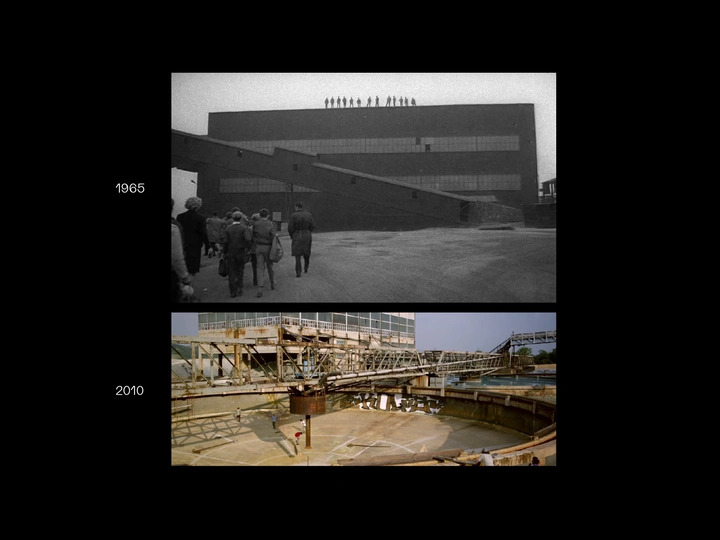Cinematic Space as Archive: The Future of our Past

Nina Bačun a multifaceted designer, researcher, and educator exploring the domains of speculative/conceptual design, exhibition/set design, and film/visual communications. She received her first Master degree in Industrial Design at the School of Design / Faculty of Architecture in Zagreb, and her second Master's degree in Experience Design at Konstfack / University, College of Arts, Crafts and Design in Stockholm in 2011. She uses holistic and transdisciplinary approaches as seen in her work within the Oaza* collective from Zagreb, Croatia. She is working as an assistant professor at the School of Design in Zagreb, and she is currently exploring the intersections of design, architecture, the built environment, and the moving images within the doctoral program of Architecture and Urban Planning in Zagreb.
*Oaza is an all female design collective from Zagreb founded by six partners and friends in 2013. Oaza designs, researches, curates, directs and edits content for visual identities, books, campaigns, exhibitions, theatre, film and digital media. Next to self-initiated projects, commissions and various transdisciplinary collaborations Oaza investigates topics of interest through total design projects which reflect the general approach to design as a political and social discipline directed towards critical questioning of our everyday life. Ongoing projects explore alternative models of production and natural resources within Made In, Oaza Books independent publishing and Female history of design through the project Designers 1930 — 1980: Context, Production, Influences. Besides self-initiated projects, Oaza members are active in the fields of formal and informal design education.
Since our lives are rapidly moving within the digital realm, it is now urgent to (re)evaluate the meaning of an intangible heritage of our virtual environments.
The project emphasizes a necessity of (re)questioning borders of uncertain past, acute present, and desired future within cinematic spaces by rethinking the practice of archiving and expanding it into the digital realm. By looking closely into Hito Steyerl's re-readings of Walter Benjamin with the recognition of the ‘image as object,’ not merely as representation, the idea of ‘activating’ an object could be a starting point or a productive force in the new approach towards the digital heritage, advancing transformation of our everyday reality. At the same time, it questions what roles cinematic spaces can have in the ‘future of our past,’ since they are not neutral as film is a form of expression and a product of an ‘uncertain’ collective memory. If invisible memory is becoming visible, ‘shaped’ within the ‘act of remembering’ through cinematic spaces, could nostalgia be seen as an instrument for retrieving our collective memory? Or, could it be used as a critical thinking tool for overwriting memory that affects the ‘post-truth’ era?